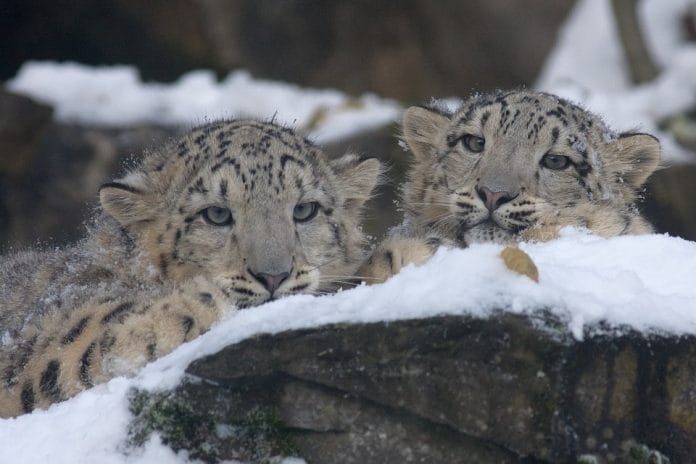Thank you dear subscribers, we are overwhelmed with your response.
Your Turn is a unique section from ThePrint featuring points of view from its subscribers. If you are a subscriber, have a point of view, please send it to us. If not, do subscribe here: https://englishdev.theprint.in/subscribe/
October 23 is celebrated as International Snow Leopard Day across the world, and especially across the 12 snow leopard range countries where this elusive animal is found. The snow leopard’s range overlaps with the source of some of the most important fresh water rivers that support more than half the world’s population.
India announced the results of its first ever snow leopard census that was carried out over a period over four years and spread over 100,000 sq.km covering Jammu-Kashmir, Ladakh, Himachal Pradesh, Uttarakhand, Sikkim and Arunachal Pradesh. This is part of a wider effort between the 12 range countries to assess the global snow leopard population, which can be an important indicator to track the health of high mountain ecosystems.
In India, this exercise presented peculiar challenges. The snow leopard’s range falls in areas that are above the tree line at elevations between 3500m to 5000m in both the western and eastern Himalaya. Accessing these areas is particularly difficult in winters, when most parts are snowed out. These areas are sparsely populated by pastoral and agro-pastoral communities with human population densities lower than 10 per sq.km., unimaginable for India. Sampling is a technique often used to assess populations of species spread over a large area. Given the difficulty to cover large areas, scientists assess the population in a smaller area – a sample – and these results are extrapolated to the wider range using statistical models. However, sampling is usually done in an area where the presence of the species is confirmed. Extrapolation can be misleading if there are areas within the range where the species is absent. This was particularly the case here since information on snow leopard presence across this vast area was very patchy. A way out of this problem was to make effective use of local knowledge among the pastoral and agro-pastoral communities living in these remote areas.
Understanding the dynamics of wildlife populations is crucial for effective conservation efforts. For instance, the recent report on India’s leopard population highlights the importance of protected areas in maintaining biodiversity and mitigating human-wildlife conflict. This is particularly relevant in the context of the snow leopard, as both species face similar challenges in their habitats. The findings emphasize the need for ongoing monitoring and community involvement in conservation strategies, which can be further explored in the leopard population report.
Livestock rearing is an important vocation in these regions which are inhabited by nomadic pastoral communities like the Bakarwal, Gujjar, Changpa, Gaddi, Bhotiyas, and Brokpa. Large parts are inhabited by settled agropastoral communities. Pastoralists travel across vast areas with their livestock on fixed migratory routes. They also lose livestock to predation by carnivores like snow leopards. As a result, they hold good knowledge of snow leopard presence and about which areas have high wildlife value – information vital to surveying this large area optimally.
In 2019, the Ministry of Environment, Forests and Climate Change released a protocol for Snow Leopard Population Assessment of India (SPAI) which suggested a two-step method. The first stage involved systematically interviewing locals residing in these high mountains to identify the wildlife values of an area. This was occasionally backed by basic field surveys to match and verify the interview responses. In the second stage, camera traps were set up to record the presence of snow leopards – an operation similar to that carried out to assess the population of tigers. These camera traps had to be set up for a period of at least 60-days with regular monitoring to ensure their functioning. These extensive operations might have been impossible without local knowledge, support and participation. Local knowledge of wildlife presence allowed assessing teams to set up camera traps in areas of different wildlife values, thus reducing the scope for errors in extrapolation. Local people’s knowledge and participation allowed scientists to overcome a peculiar methodological challenge they faced.
With this result, India now has a baseline for the snow leopard population estimated using a robust estimation technique. This result needs to be celebrated since it involved an operation in the farthest and toughest corners of the country spanning four years, which included challenges posed by the pandemic and lock downs. Periodic monitoring of the snow leopard population can now become one among a set of carefully identified parameters to watch in order to assess the health of India’s high mountain ecosystems. However, local people’s participation in enabling the current surveys makes this effort unique.
Publication:
Results from Himachal Pradesh based on SPAI: https://besjournals.onlinelibrary.wiley.com/doi/full/10.1002/2688-8319.12115
These pieces are being published as they have been received – they have not been edited/fact-checked by ThePrint.


